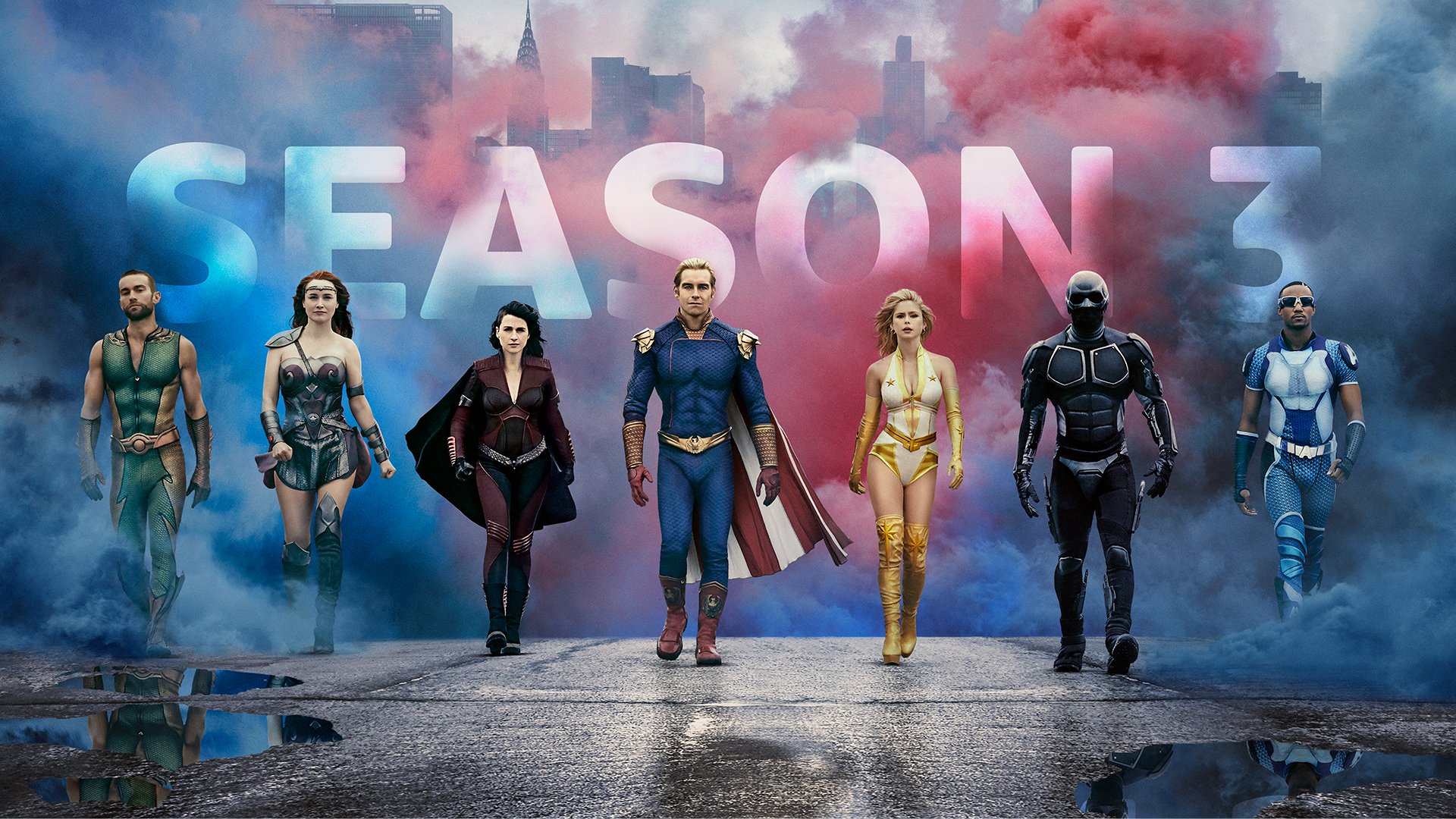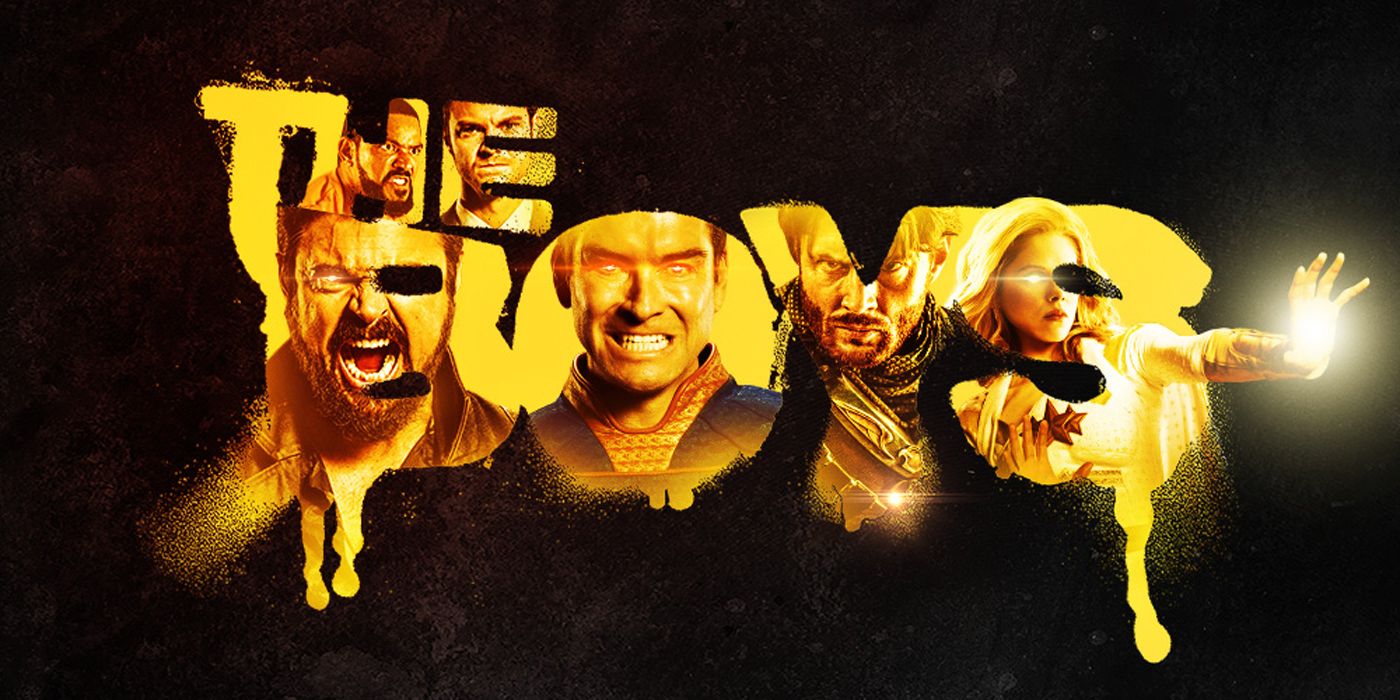Characters and Character Development

The boys season 3 – In season 3 of “The Boys,” the characters undergo significant transformations and developments, navigating complex relationships and motivations. The introduction of new characters further enriches the show’s dynamics.
The third season of The Boys promises to be even more explosive than the first two. The show has been praised for its dark humor and social commentary, and it’s sure to continue to be a hit with fans. Speaking of hitting it big, have you ever wondered how old Stephen Curry’s daughter is?
It’s amazing how quickly time flies. Now, back to the topic of The Boys season 3, we can’t wait to see what the showrunners have in store for us.
One notable shift is in Billy Butcher’s character. Driven by a thirst for revenge against Homelander, Butcher becomes increasingly reckless and morally ambiguous. His desperation to eliminate Homelander leads him down a dangerous path, testing the limits of his humanity.
The third season of the popular superhero series, the boys season 3 , is set to premiere soon. Fans are eagerly anticipating the return of the titular group of vigilantes as they continue their fight against the corrupt superheroes known as the Seven.
With new characters and storylines, the boys season 3 promises to be an explosive and action-packed ride.
Homelander
- Homelander’s instability and megalomania reach new heights, as he struggles to maintain control amidst growing threats.
- His relationship with Ryan becomes increasingly strained, as he attempts to manipulate and control the young Supe.
The Boys
- Hughie Campbell grapples with the consequences of his actions in season 2, as he tries to balance his newfound responsibilities with his desire for justice.
- Frenchie and Kimiko’s relationship deepens, exploring themes of love and acceptance in a world of violence and chaos.
New Characters
- Soldier Boy, a legendary Supe from the past, brings a complex and unpredictable element to the show, challenging Homelander’s dominance.
- Crimson Countess, a powerful and enigmatic Supe, adds a new layer of danger and intrigue to the Boys’ mission.
Plot and Themes

Season 3 of “The Boys” continues to explore the dark and twisted world of superheroes and the corrupting influence of power. The main plot follows the Boys’ efforts to expose the truth about Vought International and its superhero team, The Seven.
Subplots include the rise of a new superhero, Soldier Boy, who challenges Homelander’s dominance; the development of Butcher’s relationship with Ryan, Homelander’s son; and the growing tensions between The Boys and The Seven.
Central Themes
- Power Dynamics: The season explores the corrupting influence of power, both on individuals and institutions. Homelander’s unchecked power leads him to become increasingly tyrannical, while Vought International uses its influence to manipulate the public and silence its critics.
- Corruption: The season also examines the pervasive corruption within the superhero industry. Vought International is shown to be a ruthless corporation that profits from the suffering of others, while The Seven are revealed to be a group of deeply flawed individuals with their own selfish agendas.
- Consequences of Vigilantism: The season questions the morality of vigilantism. While The Boys are initially justified in their efforts to take down Vought International, their methods become increasingly violent and questionable. The season explores the fine line between justice and vengeance, and the consequences of crossing it.
Societal Norms and Ethical Dilemmas, The boys season 3
The season also challenges societal norms and explores ethical dilemmas. It questions the blind trust that the public places in superheroes and the dangers of unchecked power. The season also raises questions about the morality of vigilantism and the limits of what is acceptable in the pursuit of justice.
Visuals and Style: The Boys Season 3
The third season of “The Boys” elevates its visual aesthetics, embracing a gritty, hyper-realistic style that immerses viewers in the show’s twisted world. Cinematography, editing, and visual effects converge to create a captivating visual tapestry that heightens the show’s intensity and emotional impact.
Cinematography
The show’s camerawork is characterized by shaky, handheld shots that mimic the perspectives of its characters, placing viewers amidst the chaos and violence. Extreme close-ups and wide-angle shots create a sense of claustrophobia and expansiveness, respectively, reflecting the characters’ conflicting emotions and the vast scope of the story.
Color grading plays a pivotal role in establishing the show’s distinct atmosphere. Desaturated hues and harsh lighting evoke a sense of grimness and unease, while occasional bursts of vibrant color accentuate moments of heightened emotion or violence.
Editing
The editing in “The Boys” season 3 is sharp and dynamic, creating a fast-paced, adrenaline-pumping experience. Quick cuts and parallel editing juxtapose different perspectives and heighten the tension. Slow-motion sequences are sparingly used for dramatic effect, amplifying the impact of key moments.
The show’s editing also incorporates innovative techniques, such as glitch effects and distorted imagery, to convey the characters’ mental states and the chaotic nature of the world they inhabit.
Visual Effects
Visual effects in “The Boys” are seamlessly integrated, enhancing the show’s realism and grotesque elements. The depiction of superpowers and gore is both visceral and unsettling, immersing viewers in the show’s brutal and unforgiving world.
CGI is used judiciously, primarily to create the show’s iconic super-powered abilities. The effects are rendered with impressive detail and fluidity, enhancing the show’s sense of spectacle and the believability of its characters.
Symbolism and Visual Metaphors
Throughout season 3, “The Boys” employs a rich array of visual metaphors and symbolism to convey deeper meanings and themes. The use of red and blue lighting symbolizes the clash between the heroic and villainous factions, while the recurring motif of eyes represents surveillance and the characters’ struggle for control.
The show also uses animal imagery to symbolize the characters’ primal instincts and vulnerabilities. For example, Homelander is frequently depicted with eagle-like features, alluding to his predatory nature and desire for dominance.
In the highly anticipated third season of The Boys, one character who continues to captivate viewers is the enigmatic Queen Maeve queen maeve. With her complex backstory and unwavering determination, Maeve has emerged as a fan favorite. As the season progresses, her role becomes even more pivotal, as she grapples with her own inner demons and the challenges posed by the corrupt system she operates within.
Through her journey, Maeve’s actions will have far-reaching consequences for the future of The Boys and the world they inhabit.
The Boys Season 3 is finally here, and it’s packed with action, drama, and suspense. One of the standout performances in the season comes from Antony Starr, who plays the villainous Homelander. Starr’s portrayal of the character is both terrifying and hilarious, and it’s one of the main reasons why The Boys is such a success.
If you’re a fan of the show, be sure to check out antony starr the covenant for more on his career and his role in The Boys.
The Boys Season 3 has been a wild ride, with Homelander’s true colors finally being revealed. While we eagerly await the next season, let’s take a detour to the world of sports and discuss the recent Steph Curry trade rumors.
Will the Golden State Warriors trade their star player? Only time will tell. Back to The Boys, Season 3 promises to be even more intense, with new characters and unexpected twists. Hold on tight, because this season is sure to be an unforgettable one.